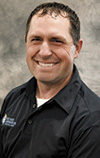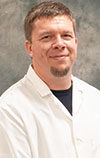June 8, 2023, marked the 175th birthday of Franklin Hiram King, the godfather of soil science. During a celebration of his life and accomplishments that was held at the University of Wisconsin’s Department of Soil Science, where King’s legacy resides, attendees were treated to some of his early work. Nestled within the list of accomplishments was a simple table of soil chemical properties that he empirically measured.
Though it was made more than 100 years ago, his table listed many of the soil nutrients that we’re familiar with today, such as phosphorus and potassium. These first fertility measurements, combined with King’s 1895-96 fertility trials, led him to believe that potassium additions could improve crop yield – a conclusion that was controversial and highly disputed at the time. Though it may not have been his intent, by making some of the first measurements of soil fertility in support of his conclusions, King may have fired the opening salvo in what we now call routine soil testing.
More than 100 years later, King’s idea that increased fertility can increase yield is so deeply rooted in agriculture that it’s hard to believe there was a time when it was unknown. In fact, it may not be far off the mark to say that it has become so ingrained in our culture that it’s no longer questioned. King’s bold idea has become one of those unquestioned facts, like “clouds produce rain,” where it’s so logical that it seems we were simply born with the knowledge, and it never comes to mind that there may be an origin story. The nearly universal adoption of soil testing has given us years and years of increased crop production all around the world. There is a universal law, however, that says we can only go so far.
The law of diminishing returns suggests that the low-hanging fruit may have been picked when it comes to improving yields through soil fertility. As the industry moved to progressively smaller and smaller management zones and increased dependence on soil testing, soil testing methodology responded by doing nothing. There hasn’t been a significant change since 1984 when the manuscript detailing the Mehlich 3 extractant was published. Even that wasn’t really “new.” As the name suggests, it was an improvement (albeit a significant one) to a previous extracting solution. The difficulty here is that developing a new soil testing method requires a lot of time and a lot of money.
Major universities have traditionally taken the initiative, but in the current economic climate, universities have moved away from agricultural research in favor of more lucrative quarry. Agronomic researchers struggle to find funding to expand our understanding of what is considered settled science or routine fertility studies; all the while, the industry continues to evolve, and we demand more from soil testing. Without help from universities, there has been a shift in the paradigm, and private industry is now the largest driver of innovation in soil testing. Without the option to develop completely new test methods, innovators are left to tackle the few pinch points left in the system we already have – namely sample collection and laboratory analysis.
Sample collection is a logical place to try and make improvements. Some researchers have estimated that as much as 50% of the error in soil testing is introduced at sample collection, and variability in the X, Y and Z axes has been well documented. Mitigating the X and Y variability is one of the objectives behind the introduction of GPS into the equation. This will allow a person to go back to almost the same spot time after time. The variability in Z (depth) is a bigger challenge that can only truly be overcome by a patient, well-trained and competent sampling technician who doesn’t have time constraints. That’s a commodity in very short supply.
Farm labor has been a challenge throughout time. The industry has embraced the challenge and is getting more productivity out of every acre, person and machine, and efficiency has become the language of agriculture. Machinery is getting bigger, faster and is doing more with less operator involvement. All of these statements are true of agricultural production, but ring true in sample collection as well.
Early efficiency gains have come from automation of sampling equipment. Rather than getting off the sampling rig, samples are pulled with the push of a button, and through the miracle of electrons, what was once accomplished with a hearty stomp of the foot and a strong back is now being done with hydraulics and microprocessors. This increase in equipment technology is also leading to an increase in accuracy of sample depth. Proximity switches and sensors are taking the place of tape measures and scratch marks, ensuring that sample depth is well controlled even as sampling technicians become more sparse and less technical.
But what about taking things a step further? What if the process could be automated? Several companies have done just that. Companies have created self-propelled units that drive themselves from point to point, and the human is only needed if a problem occurs. Another great innovation in sampling is a towable unit that automatically pulls and bags samples while the operator drives through the field. The only major operator interaction that occurs is unloading the samples at the end of the sampling operation. Another great benefit to this machine over standard methods is pulling many more cores per sample.
Even the authors of this article have taken steps to bring soil sampling into the 21st century. Over a decade ago, Rock River Laboratory partnered with engineering students to work on developing new methods of soil sampling. Many areas were explored including ditching the soil probe altogether. Another area of exploration was using small, autonomous sampling robots that could be dropped off at the field driveway and picked up when the sampling operation is complete. Some other areas of work include using drones to sample soil. Rather than pulling soil samples at a faster rate, efficiencies could be gained by decreasing travel time within the field. Just imagine dropping off one robot and having it do the work while you head to the last field to retrieve another robot that has sampled an entire field all on its own. The possibilities, and profitability, are endless if the right partners can meet and put it all together.
The second place innovators are looking to make an improvement is in the lab, or to state it more accurately, to remove the lab altogether. Several products have come to the market over the past decade or so that aim to bring the analysis to the field. Whether it only analyzes nitrate or tries to provide a complete soil test, these products aren’t bringing anything new to soil testing but are doing the same old thing in a new way. The removal of trained lab staff and the well-controlled laboratory environment introduces interesting and complex challenges that can only be overcome with some truly clever engineering, and some of these products are indeed very cool. That said, there is one major challenge that even the most clever engineering can’t overcome: the law.
Earlier in this article, we tongue-in-cheek referred to soil testing as settled science. It seems like it should be, but it very much is not settled science, and the reason goes right back to the structure of the academic system that gave us soil testing in the first place. More specifically, the reason is that the relationship between soil and plants is complicated, and researchers over the decades have tried to crack into it using various approaches. These approaches are what we now call our soil test methods, and there was little to no cross-collaboration among the universities, so we ended up with our current system in which different states use different methods. So while soil testing may be settled on a state-by-state basis, there is still a lot of work that needs to be done for one of these non-lab soil labs to be relevant coast to coast without needing to be reconfigured every time it crosses a state line. Taking this challenge to the next level, many states have developed certification programs for soil labs – a requirement that a mobile soil lab will not be able to fulfill. In many cases, using a specific soil test methodology from a certified lab is not simply a suggestion but a legal requirement for any grower participating in government-administered cost-sharing or tax-deferral programs, so approach with caution.
It takes up to 1,000 years of environmental action to form just 1 inch of topsoil, so soil scientists have a different perspective on time. While drones and imagery are flying along, the evolution of soil testing seems to be moving at an earthworm's pace. Innovation just takes a little longer in soil science, and understandably, the end users are getting antsy. I wonder what King would think of all this, seeing a world where his controversial idea is the very foundation of an industry that can’t get knowledge fast enough. I like to think that he’d feel vindicated but also frustrated that academia is still falling behind.











